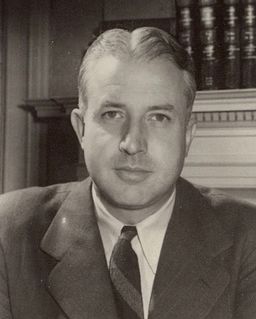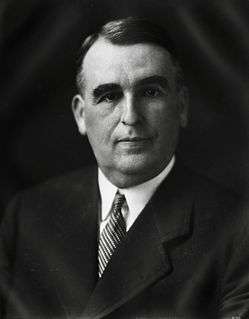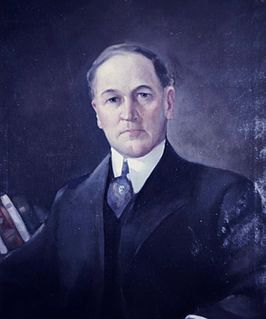
James Elisha Folsom Jr. is an American politician who was the 50th Governor of Alabama from April 22, 1993 to January 16, 1995. He has also served as Lieutenant Governor of Alabama on two separate occasions. He is a member of the Democratic Party.

The Alabama gubernatorial election of 1998 was held on 3 November 1998 to select the Governor of Alabama. The election saw incumbent Governor Fob James (R) against Lieutenant Governor Don Siegelman (D). The result saw Don Siegelman win a decisive victory over Fob James. As of 2019, this is the most recent election in which a Democrat was elected Governor of Alabama.

The 1986 Alabama gubernatorial election saw the election of Republican H. Guy Hunt over Democrat Bill Baxley. In state politics, this election is largely seen as a realigning election since Hunt was the first Republican to be elected Governor since Reconstruction. In March 1986, incumbent George Wallace announced that he would not seek a fifth term as governor, ending an era in Alabama politics.

The 1954 Alabama gubernatorial election took place on November 2, 1954, to elect the Governor of Alabama. Incumbent Democrat Gordon Persons was term-limited, and could not seek a second consecutive term.

The 1950 Alabama gubernatorial election took place on November 7, 1950, to elect the Governor of Alabama. Incumbent Democrat Jim Folsom was term-limited, and could not seek a second consecutive term.

The 1946 Alabama gubernatorial election took place on November 5, 1946, to elect the Governor of Alabama. Incumbent Democrat Chauncey Sparks was term-limited, and could not seek a second consecutive term.

The 1942 Alabama gubernatorial election took place on November 3, 1942, to elect the Governor of Alabama. Incumbent Democrat Frank M. Dixon was term limited, and could not seek a second consecutive term.

The 1938 Alabama gubernatorial election took place on November 8, 1938, to elect the Governor of Alabama. Democratic incumbent Bibb Graves was term-limited, and could not seek a second consecutive term.

The 1930 Alabama gubernatorial election took place on November 4, 1930, in order to elect the Governor of Alabama. Democratic incumbent Bibb Graves was term-limited, and could not seek a second consecutive term.

The 1926 Alabama gubernatorial election took place on November 2, 1926, in order to elect the Governor of Alabama. Democratic incumbent William W. Brandon was term-limited, and could not seek a second consecutive term.

The 1922 Alabama gubernatorial election took place on November 7, 1922, in order to elect the Governor of Alabama. Democratic incumbent Thomas Kilby was term-limited, and could not seek a second consecutive term.

A general election was held in the U.S. state of Alabama on November 6, 2018. All Alabama executive officers were up for election along with all of Alabama's seven seats in the United States House of Representatives. Primary elections took place on June 5, 2018, for both major parties.

The 1959 Mississippi gubernatorial election took place on November 3, 1959, in order to elect the Governor of Mississippi. Incumbent Democrat James P. Coleman was term-limited, and could not run for reelection to a second term. As was common at the time, the Democratic candidate ran unopposed in the general election so therefore the Democratic primary was the real contest, and winning the primary was considered tantamount to election.

The 1955 Mississippi gubernatorial election took place on November 8, 1955, in order to elect the Governor of Mississippi. Incumbent Democrat Hugh L. White was term-limited, and could not run for reelection to a second term. As was common at the time, the Democratic candidate ran unopposed in the general election so therefore the Democratic primary was the real contest, and winning the primary was considered tantamount to election.

The 1951 Mississippi gubernatorial election took place on November 6, 1951, in order to elect the Governor of Mississippi. Incumbent Democrat Fielding L. Wright was term-limited, and could not run for reelection to a second full term. As was common at the time, the Democratic candidate ran unopposed in the general election so therefore the Democratic primary was the real contest, and winning the primary was considered tantamount to election.

The 1943 Mississippi gubernatorial election took place on November 2, 1943, in order to elect the Governor of Mississippi. Incumbent Democrat Paul B. Johnson Sr. was term-limited, and could not run for reelection to a second term. As was common at the time, the Democratic candidate ran unopposed in the general election so therefore the Democratic primary was the real contest, and winning the primary was considered tantamount to election.

The 1931 Mississippi gubernatorial election took place on November 3, 1931, in order to elect the Governor of Mississippi. Incumbent Democrat Theodore G. Bilbo was term-limited, and could not run for reelection to a second term. As was common at the time, the Democratic candidate ran unopposed in the general election so therefore the Democratic primary was the real contest, and winning the primary was considered tantamount to election.

The 1927 Mississippi gubernatorial election took place on November 8, 1927, in order to elect the Governor of Mississippi. Incumbent Democrat Dennis Murphree, as he had not served a full term, was eligible for and ran for election. As was common at the time, the Democratic candidate ran unopposed in the general election so therefore the Democratic primary was the real contest, and winning the primary was considered tantamount to election.

The 1923 Mississippi gubernatorial election took place on November 6, 1923, in order to elect the Governor of Mississippi. Incumbent Democrat Lee M. Russell was term-limited, and could not run for reelection to a second term. As was common at the time, the Democratic candidate ran unopposed in the general election so therefore the Democratic primary was the real contest, and winning the primary was considered tantamount to election.

The 1919 Mississippi gubernatorial election took place on November 4, 1919, in order to elect the Governor of Mississippi. Incumbent Democrat Theodore G. Bilbo was term-limited, and could not run for reelection to a second term. As was common at the time, the Democratic candidate won in a landslide in the general election so therefore the Democratic primary was the real contest, and winning the primary was considered tantamount to election.





















